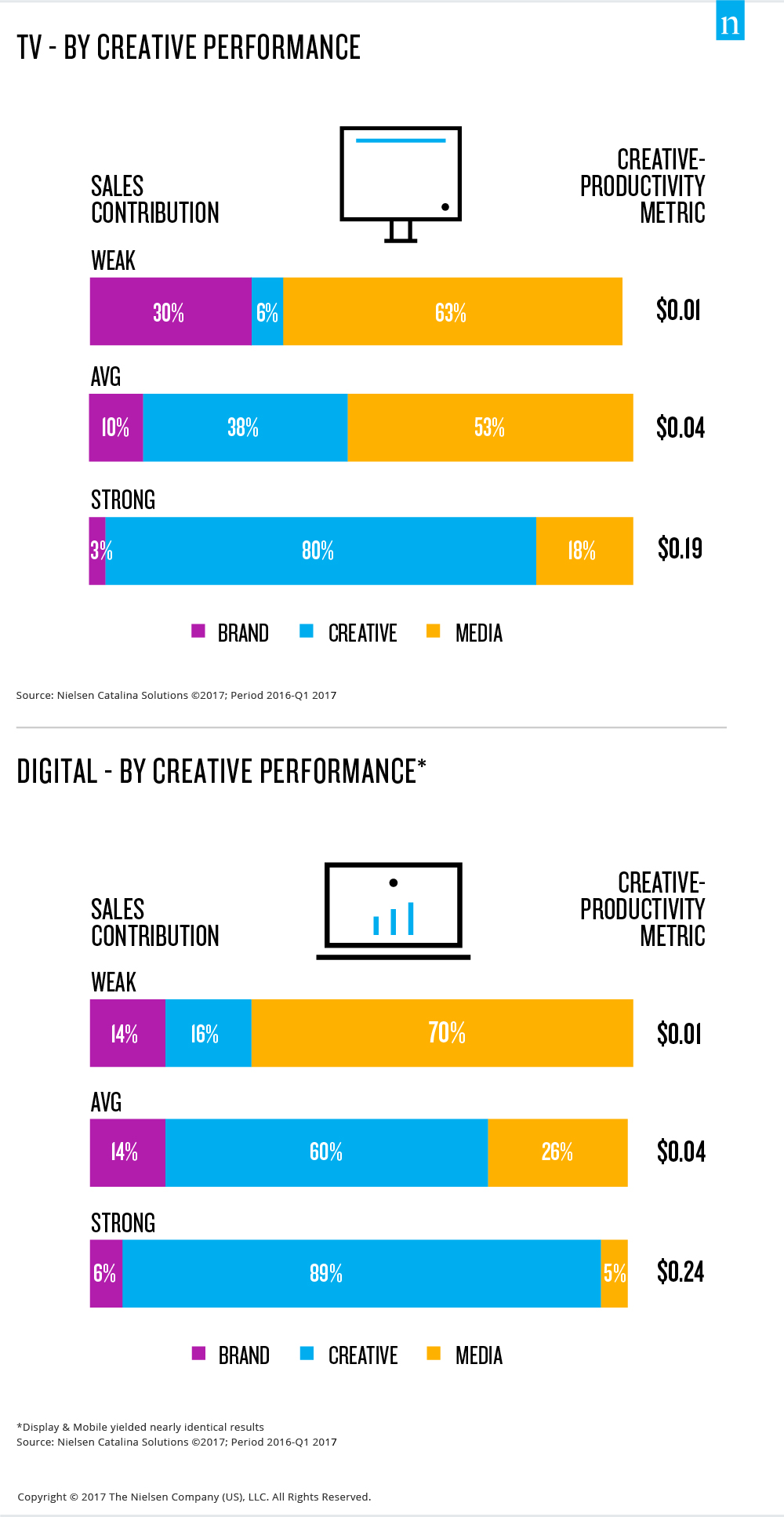 One morning recently, an impromptu discussion broke out in the office about what makes for great advertising. We discussed a few of our favorite recent ads and, as one can imagine, the range of suggestions about which was best was broad. Short form and long form. Funny and sentimental. Product-driven and brand-focused. Rational and emotional. While they ranged in length and objective, one thing was clear: They were “must-watch” ads—not filler in between program breaks, but great creative that we want to talk about, share and watch—over and over again.
One morning recently, an impromptu discussion broke out in the office about what makes for great advertising. We discussed a few of our favorite recent ads and, as one can imagine, the range of suggestions about which was best was broad. Short form and long form. Funny and sentimental. Product-driven and brand-focused. Rational and emotional. While they ranged in length and objective, one thing was clear: They were “must-watch” ads—not filler in between program breaks, but great creative that we want to talk about, share and watch—over and over again.
I was reminded of the importance of great creative as I reviewed the results of a new, joint research project by Nielsen Catalina Solutions (NCS) and Nielsen. The results reinforced an old saw of advertising: creative is king! Creative is the thing that drives what we engage with, share, talk about, debate, remember and buy. Creative has great power, regardless of where, when and how it runs. Heck, Apple’s 1984 ad to introduce the Macintosh computer remains one of the most talked about of all time—and it ran a single time on national TV.
The study sought to quantify the sales contribution of five key drivers contributing to advertising’s effectiveness: creative, reach, targeting, recency and context. The study findings show how the relative balance between these drivers has changed over time and how it works across TV and digital channels. The most interesting aspect for me was that the results demonstrated that creative quality contributes as much to a brand’s in-market success as all other factors combined. Further, the study found that when creative is strong, it’s the overwhelming driver of in-market success: up to 80% for traditional TV and 89% for digital advertising. Conversely, when creative is weak, the sales lift is weak across TV and digital, and other media factors are the main drivers.
Great creative, in short, remains the single most important factor in the success of any ad campaign, across both traditional TV and digital platforms. New tools and techniques can enhance, extend and better target reach, and new formats and destinations seem to arise every day to help advertisers find their consumers. But they simply can’t match the power that great creative delivers when it comes to driving truly successful ad campaigns.

This, of course, raises several questions: What is great creative? How do marketers know if their creative is “great?” And how do they achieve great success with it?
In the past, marketers have relied on qualitative and/or quantitative self-report copy testing to evaluate creative. Essentially, they made decisions based on biased consumer responses often aided by their professional eyes and instincts. Essentially, they went with what they thought would work. While this may have kept very poor advertising off the air, it left some potentially great work on the drawing board. And if they had a piece of creative they needed to cut down/compress, they might have relied on personal judgment.
This is where consumer neuroscience increasingly plays an important role for marketers. That’s because the current suite of tools combining EEG, eye tracking, facial coding and biometrics, along with self-report surveys, offer a unique opportunity. Not only can these tools measure and evaluate on a macro level (i.e., what works and what doesn’t), they go even deeper, providing moment-by-moment insight that can pinpoint where a spot(s) needs to be adjusted. The results enable a collaborative approach between marketers, creative agencies and researchers to help go from early stage to primetime success—avoiding the cutting-room floor that has claimed too many could-have-been-great ads. This is because consumer neuroscience measures what traditional research methods cannot. Methods like surveys can only tap into our conscious responses, which we know are often heavily biased and are only one, arguably smaller, component of how we consume media. Studies have shown that the majority of our decision-making happens non-consciously, so much of what drives everyday decisions—including what we’ll purchase, watch and talk about—requires tools that can measure these responses.
Several years ago, we developed a model designed to understand the explosion in content platforms and the types of creative that can be optimized for each. Our Brand Immersion Model became a framework for defining the relationship between the immersive platform of TV and digital’s flexible platforms. Our research found that TV, through its unmatched ability to create new, unconscious emotional connections, has the power to form need states—which make consumers receptive to brand messages—where none existed before. Flexible environments play a key role in reinforcing need states. So the two work together in powerful, synergistic ways.
It’s important to understand this relationship in order to develop creative that will be great on each platform. The Brand Immersion Model breaks down the two primary ways to engage with content:
Highly Immersive Platforms: Viewers are more apt to be passive participants, observing content that substitutes the viewers’ emotional state with the emotional lives of the onscreen characters. If those characters need a product, the viewer feels that same need. Examples include television, virtual reality, theaters and home theaters, IMAX and events like the Olympics. Immersive content enables us to experience others and generate need states that previously did not exist.
Highly Flexible Platforms: Viewers are more apt to be active participants, constantly searching for something that engages them. This content requires the need to already become established. The content or advertising then supports this need. Examples include smartphones and tablets with email, social media and the websites that provide a never-ending search for more. Flexible content enables us to develop our own experience and satisfy need states that already exist.
Television is highly effective as an advertising platform because it is the primary medium that can create a need state, either through experiencing the needs of the onscreen characters during the primary content or through the high emotional involvement with on-screen characters during the advertising itself.
With flexible experiences, individuals seek out an experience more customized to their interests. For the most successful executions, this can result in higher engagement with content than on an immersive platform because it’s tailored to what the consumer is seeking. The reason for this heightened engagement is that the content is user-generated—people seek to broaden their conversations with each other and trusted sources like influencers instead of with the stories of new characters in an advertisement. Unless the ad is for a product the consumer already knows that he or she wants at that moment and it takes up enough of the screen to get noticed without turning the viewer “off,” it cannot generate the same level of connection.
So how do you ensure that your creative and different platforms go hand-in-hand for the most optimal engagement? How can we move from must-skip to must-watch? And how do we turn turn-out into tune-in? It’s simple: tap into the full spectrum of consumers’ responses— both conscious and non-conscious—to uncover areas of emotional impact, visual hot spots, blind spots and inform the strongest possible creative development.
To learn more, register for the upcoming webinar on October 25th or on demand.



